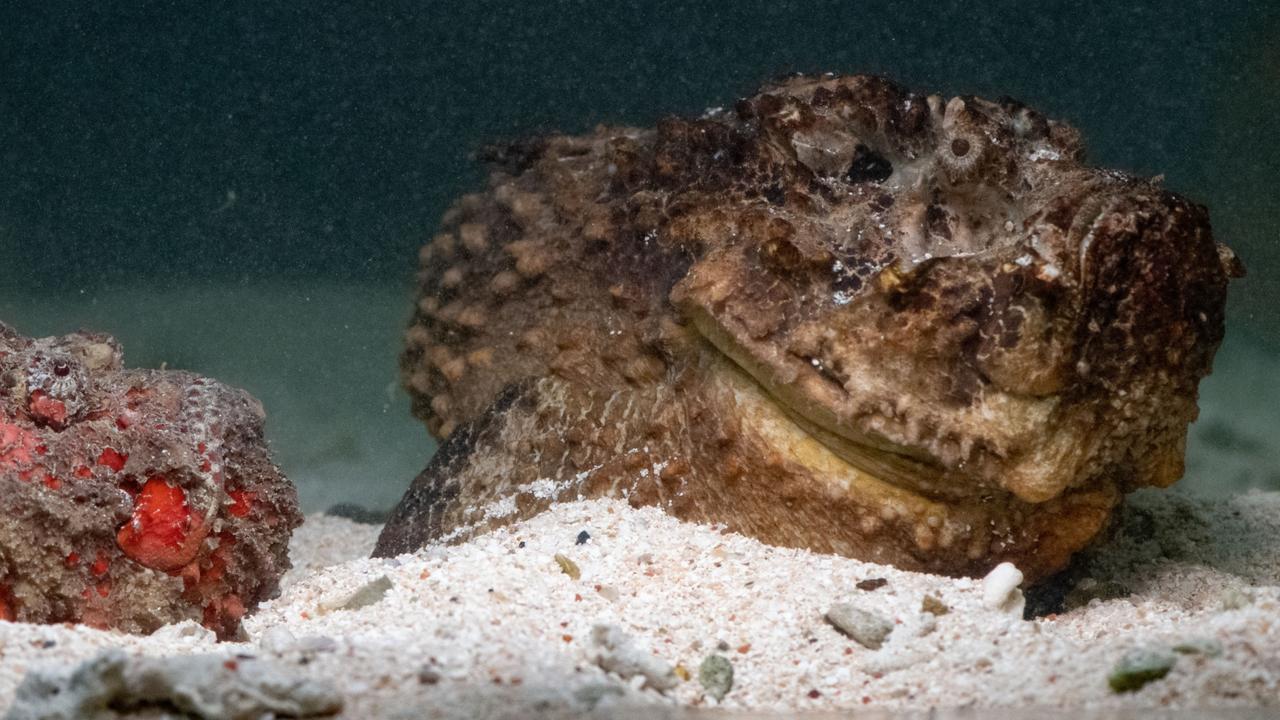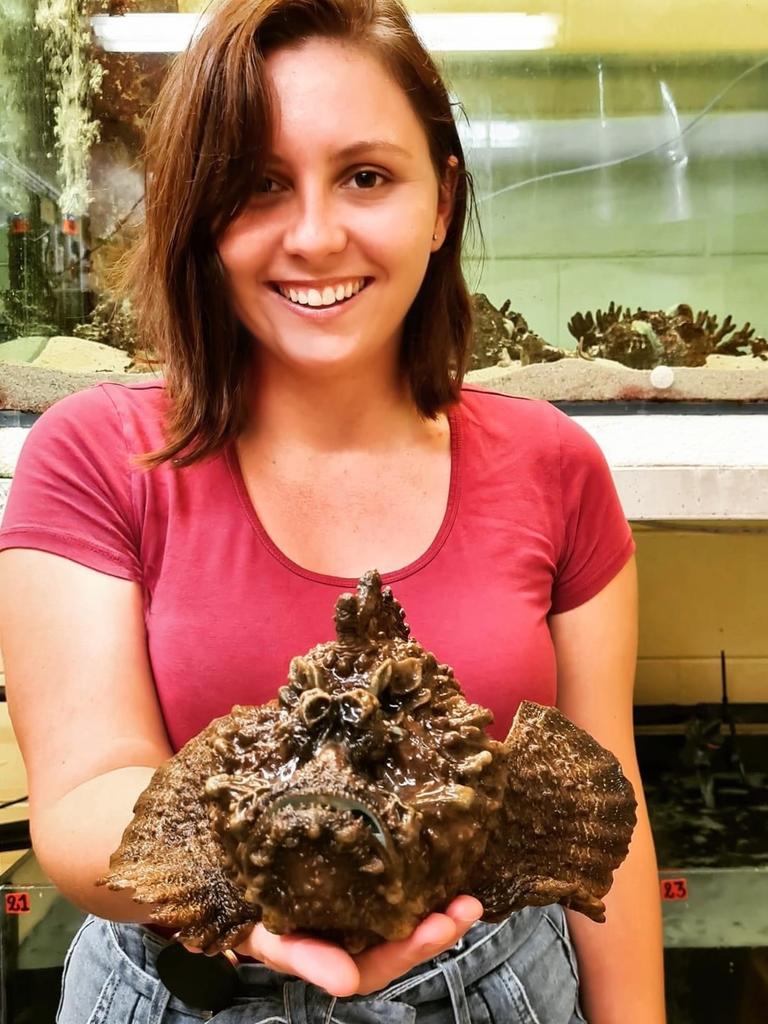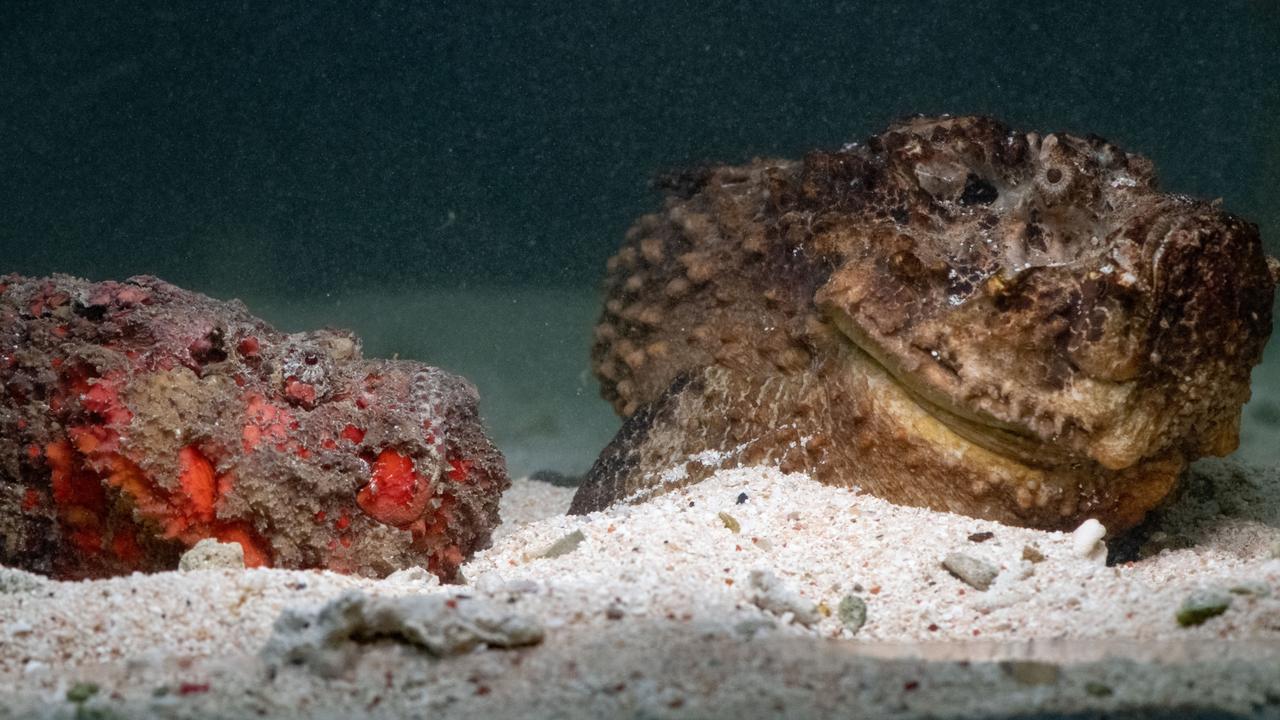JCU scientists reveal stonefish venom could hold cure for parasitic worm infection
The cure for a gastrointestinal parasite which affects one quarter of the world’s population, could be found in one of Australia’s most venomous fish, according James Cook University scientists.

Cairns
Don't miss out on the headlines from Cairns. Followed categories will be added to My News.
The cure for a gastrointestinal parasite which impacts one in four people in the world, could be found in one of Australia’s most venomous fish, scientists say.
James Cook University PhD candidate Danica Lennox-Bulow, who led the study to find a cure for parasitic gastrointestinal worms (helmitnths), said stonefish toxins could be used to fight parasitic worm infections.
Currently, existing drugs have become increasingly ineffective against the worms.
“It’s estimated that over two billion people, or a little over 24 per cent of the global population, are currently infected with helminths,” Ms Lennox-Bulow said.

“They can cause intestinal issues, organ damage, skin conditions, malnutrition and impaired growth and physical development.”
Ms Lennox-Bulow said cases of drug resistance for helminth species had emerged within the last decade, infecting pets and humans.
“As such, new drugs with novel mechanisms of action are urgently needed,” she said.
Despite stonefish venom being fatal to humans, Ms Lennox-Bulow said drugs with ‘novel mechanisms’ were urgently needed to counter infections.
“Stonefish live on the seabed and don’t have scales. As such, we would expect these animals to harbour a lot of parasites – but interestingly, they don’t,” she said.

“One theory is that their ichthyocrinotoxins – toxins they secrete on their skin – afford them some protection against parasites,” Ms Lennox-Bulow said.
The scientists tested skin toxins from Queensland’s Estuarine Stonefish and Reef Stonefish against the infective (skin burrowing) larval stage of the Rodent Hookworm.
“While skin toxins from both stonefish species were found to be toxic to rodent hookworm larvae, those from the Estuarine Stonefish displayed the most favourable characteristics for therapeutic application,” she said.
“There’s still a lot of work to do before stonefish toxins are as effective against parasites as established drugs are.
“We still need to drill down to find exactly what the active components are and we need to test these against a wider range of parasite species and taxa, but we’ve definitely found something here worth a closer look.”
More Coverage
Originally published as JCU scientists reveal stonefish venom could hold cure for parasitic worm infection








